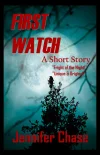“Mankind has a natural predator, the psychopath, and this predator is invisible because there are no easily discernible markings that set him apart.”
This quote was taken from, The Trick of the Psychopath’s Trade: Make Us Believe that Evil Comes from Others.
When we hear the word psychopath we envision a creepy, murdering monster, but psychopaths blend into society in ALL walks of life as well as professions. However, these individuals are not ALL serial killers of course, but they do leave a path of destruction and broken dreams in their wake. Unfortunately, I’ve met more than my fair share of these individuals and it has driven me to study them. I like to feature these type of characters in my books with a creative flair of course. Since we know, in reality, a small portion of what makes them tick, fictional psychopathic characters take on a whole new dimension.
What happens when we “unmask” the psychopath? What we find are antisocial personality and related syndromes. The Hervey Cleckley checklist has made a profound impact on the way we think about psychopathy. His empirical research has influenced the way we view the disorder.
Cleckley and many other researchers contributed interesting assessments and research into psychopathy with the temporal gradient to fear arousal, various ratings of psychopathy, patterns of autonomic activity, sensory input, and perceptual-cognitive factors. All of these aspects contribute to the psychopathy checklist.
It has been estimated that approximately 1% of our society fits the true definition of a psychopath. About 20% of incarcerated inmates are psychopaths. It may be as high as 35-40% if you include inmates with anti-personality disorder, which have many of the same characteristics as psychopaths.
The 20-item psychopathy checklist was revised in the 1980s and is still used today. Here’s Cleckley Checklist in order of characteristics.
- Glibness / superficial charm
- Grandiose sense of self-worth
- Need for stimulation / proneness to boredom
- Pathological lying
- Conning / manipulative
- Lack of remorse or guilt.
- Shallow affect
- Callous / lack of empathy
- Parasitic lifestyle
- Poor behavioral controls
- Promiscuous sexual behavior
- Early behavioral problems
- Lack of realistic, long term plans
- Impulsivity
- Irresponsibility
- Failure to accept responsibility for own actions
- Many short-term marital relationships
- Juvenile delinquency
- Revocation of conditional release
- Criminal versatility
Why do we find these types of individuals so interesting?
I can’t speak for anyone else, but I find it fascinating how they can blend in to society like a truly evil chameleon. Their behaviors, thought processes, and impulsiveness make for serious study. My particular interest is in the predatory behavior of committing serial crime. There is no doubt there will be a lack of information or psychopaths for this study, but hopefully it will continue to unlock the tightly wrapped brain process of the human psychopath.
***
“If you like mystery, suspense and the occasional shocking, unexpected event, you will love this book.”
“Jennifer Chase knows her stuff when it comes to police procedures, and that coupled with her effortless writing style makes for a very enjoyable read.”
“I really enjoyed reading this book. Jennifer Chase’s use of a very clear and descriptive writing style allows a reader to `cognitively experience’ the emotions and events that take place `within’ and `between’ the different characters within this particular gripping and absorbing story.”
DEAD BURN is available at Amazon, Amazon UK, Barnes & Noble, Kobo, Sony, iTunes, Smashwords, and most online and book retailers.
***





































You are truly a source of wonderful, intriguing information. This list made me think of one particular person in my past and also one of my characters. I’m fascinated with the psychopathic personalities too and love reading your blog. Thanks for sharing.
LikeLike
Thank you so much Morgan and I’m glad that you find my articles useful. There’s so much great information (and unusual) that I want to share, but time can be an issue. Stay tuned for more.
I appreciate your support and stopping by! Have a wonderful weekend.
LikeLike
Psychopaths are fun to write, aren’t they. One character in my soon-to-be-published novel sees himself as a soldier of Darwin who is playing survival if the fittest in order to strengthen the human race.
Psychopaths are especially apt as predators because, lacking emotions, they’re able to step back and assess (and mimic) the emotions of others. H.H. Holmes and Albert Fish were great at playing the emotional strings of others.
LikeLike